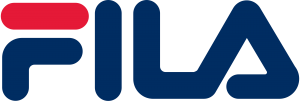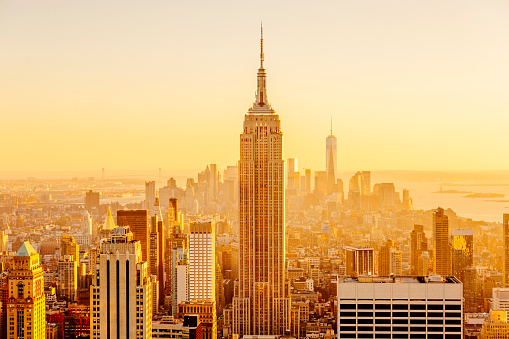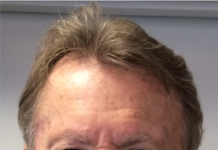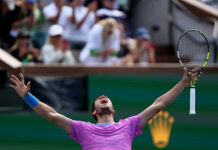Bill Simons
The Manhattan Project was the mother of all bubbles. In 1942 in Los Alamos, in the shadow of New Mexico’s remote mountains, the US government created a secretive, self-contained hideaway that drew the best players in science. In just three years the project produced the atom bomb that ended World War II. Forty-three years later the disgruntled South African Kevin Curren was so fed up with the then rather raw US Open site that he said an atom bomb should be dropped on the place.
Now tennis has its own bubble – the protective enclave to create a COVID-safe US Open environment, and their own initiative, which they jokingly call their “Manhattan Project.” You see, officials hope to keep traditionally footloose players out of Manhattan by bringing some of of the pizazz of the Big Apple to their far-from-Broadway hotel that was long ago dubbed “the Marriott Alcatraz.”
The original Manhattan project brought together a trio of brilliant problem-solvers, among others: the ultimate nerd, UC Berkeley physicist Robert Oppenheimer, Enrico Fermi, the architect of the nuclear age and the Nobel Prize-winning chemist, Glenn Seaborg.
Today, in a virtual press conference, the USTA featured its own trio of problem solvers. The USTA’s CEO Mike Dowse, the Open’s newly minted Tournament Director Stacey Allaster, and infection specialist Dr. Bernard Camins were not charged with creating an explosive device that would end a war. Rather, their task was to make sure the coronavirus didn’t explode at the first big international event of the COVID era.
The Manhattan Project had its problems towards the end of its run (spies penetrated its supposedly air-tight security) and, on a totally different level, the US Open’s Manhattan Project has already had issues. An individual, said to be a non-player, had come up positive on a second test after being in the bubble for 48 hours. The person will be quarantined for 10 days and his or her roommate will be quarantined for 14 days. Officials noted this was not shocking since 1,400 tests had been done. Mount Sinai’s Director of Infection Prevention, Dr. Bernard Camins, said, “We are doing additional analysis of everywhere this individual went and who they had contact with.”
Amidst this tough news, there was a sense of high alert, along with a clear message: New York was once the epicenter of the pandemic, but it now has one of the lowest infection rates in the country. So let’s not panic, and let’s remember there’s a lot to celebrate. Yes, neither Rafa or Roger will be playing in a Slam for the first time this century. It’s been since 2003, when Serena and Sampras were absent, that neither defending champion has played; last year’s champions, Rafa and Bianca Andreescu, will not be on hand. And we will dearly miss names like world No. 1 Ash Barty, and her fellow Aussie Nick Krygios, as well as Daniil Medvedev, Gael Monfils, Simona Halep and Kei Nishikori. But the Open will have bright star power: Serena, Venus, Coco, Naomi Osaka and Sloane Stephens, plus some mighty fine male players: Nole, Dominic Thiem, Stefanos Tsitsipas and Alexander Zverev. Seven of the top 10 ATP players, eight former Grand Slam finalists, and 90 of the top 100 players will be on hand. The women’s draw will feature ten former Grand Slam champions, seven former No. 1’s, and 79 of the top 100.
Why so many pros are going to New York despite COVID fears is obvious. Players gotta play – that’s how they’re programmed. While the field will be a bit diminished, opportunity’s flag will flutter high above the virtually empty Arthur Ashe stadium, and some tidy fortunes are waiting to be made. The winners will pocket $3 million each.
Dowse shared this financial snapshot: “Despite the fact that the USTA’s net operating income will be down nearly 80%…[we had the] ability to tap into our financial reserves, lines of credit, and our recent reorganization, [so] we can still provide total player compensation of nearly 95% vs. a year ago and we can continue to fund our community tennis sections at a somewhat comparable level for ’20 and ’21.”
Plus, there’s more good news. “Recent reports from the tennis industry,” said Dowse, “are showing the sales of entry-level tennis racquets and the purchase of tennis balls have nearly doubled in May, June and July. Players from all backgrounds are discovering that tennis is the perfect post-pandemic sport. It’s safe, social, great exercise, and, most importantly, is fun. We know that both new and long-time players…are going to be excited to watch these great athletes.”
So, pros are back where they belong. Many in the tribe have gathered within the New York bubble. It’s like the first day of school for ATP and WTA warriors – giddy smiles and air-hugs abound. Almost 350 players are already on hand in anticipation of the August 22 start of the Western and Southern tourney, and the US Open, which begins August 31.
“There’s a strong sense of community – that we’re all in this together for our sport and for our fans,” noted Allaster. Dowse added, “For the players and everyone involved, the last week has been incredible…they’re so excited to be back into the sport. The energy is very positive.”
Allaster noted that the Open has taken over one of the two player hotels. “The Long Island Marriott is 100% ours,” she gushed. “We have transformed that property…to create an exceptional experience. She added a whimsical bit of pandemic humor: “We call it the Manhattan Project. You can’t go to Manhattan but we’ll bring Manhattan to you. There’s everything from fitness, a gym, a recovery room, an arcade room, a gaming room, a golf simulator, a sports simulator, a massive outdoor lounge and food trucks every night. It’s a good vibe.”
None of this would be happening if New York State hadn’t vigilantly and maturely responded to COVID-19. If the state weren’t in Phase 4 of the pandemic, there would be no Open. And, there would be no tourney if the often dysfunctional tennis community hadn’t wisely banded together. Dowse observed, “Our sport can sometimes be bifurcated or split a little bit. This is a great example where we all came together to make this happen and be aligned.” He reported that that the USTA board had never insisted there had to be a tourney – “It was never a ‘host-at-all costs’ event.”
Clearly, Dowse was not only pleased with the Open’s relatively strong player field, but also with the five-month effort to save the Super Bowl of American tennis. With a hint of pride, he said his team “knows how to adapt…We were very disciplined.” Of course, that discipline was nothing compared with the incredible accomplishment of the original Manhattan Project – the development of the bomb in secret over three years. Goodness, Vice-President Harry Truman didn’t even know about it when he became president on April 12, 1945. There are probably thirteen different journalistic guidelines that insist you can’t compare America’s Manhattan Project, a mind-boggling effort that forever changed the arc of history, to the US Open’s Manhattan Project, that could bring a measure of sporting joy to many at a perilous time in our history.
Then again, there’s always a tennis connection. So I recalled the curious tale by the inspired New York photographer Phillipe Halsman, who shared this story about the brilliant and studious Robert Oppenheimer, the father of the atomic bomb, that in the end has a bit of a tennis twist.
Halsman wrote, “I remember being told that, in order to read the Vedas in the original, Oppenheimer had mastered Sanskrit in three months. Even as a youngster, Oppenheimer was totally devoid of any other interest but science. Therefore, when he entered college, his worried parents made a special effort to get him an outgoing and sociable roommate, hoping that Robert would fall under his influence. Instead, the roommate grew more and more studious, gave up his interest in tennis and pretty girls, and ended up becoming a college professor.”




















